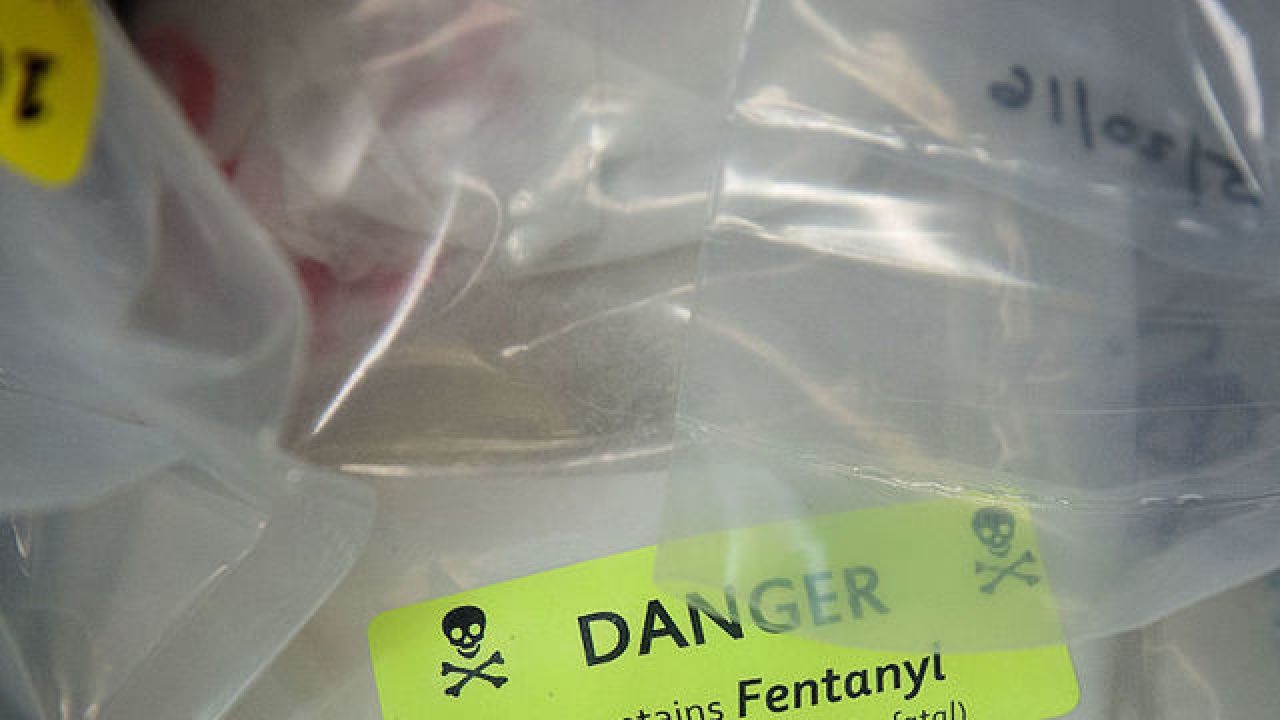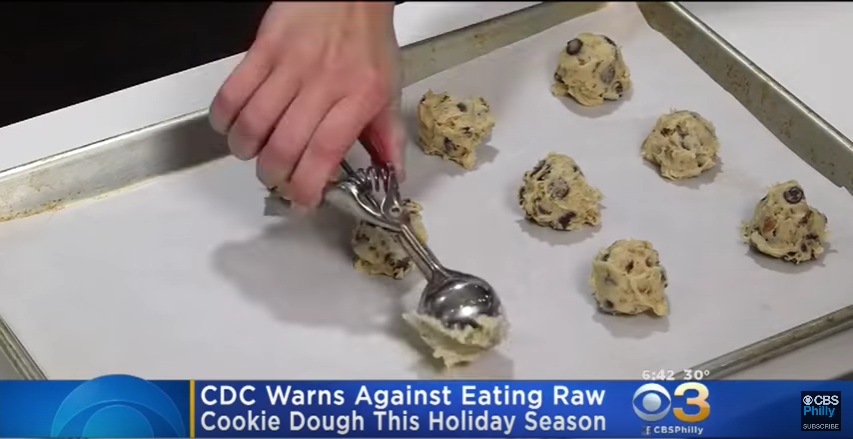How About 6 Vaccines In One? FDA Approves New Vaccine From Sanofi, Merck
Would you rather have one shot or multiple shots? Unless you are an aichmophiliac, your answer would probably be one.
Aichmophilia is the obsessive interest in sharp or pointy objects. Not sharp like a hounds-tooth jacket, but sharp like knives, swords, and needles. For everyone who does not have aichmophilia, the U.S. Food and Drug Administration (FDA) has just approved a combination “diphtheria-tetanus-pertussis-hepatitis B-poliomyelitis-invasive haemophilus influenza type B disease” vaccine.
Vaxelis is a hexavalent vaccine, which is a heckuva lot of valents. The prefix hexa- means six. So, a hexapod is an insect with 6 legs. A hexagon is a shape with 6 sides. A a hexa-doughnut would be a doughnut with 6 of something.
A vaccine’s valence is the number of different types of antigens the vaccine contains. An antigen is something that stimulates your immune system to react. Usually, for a vaccine, it is either a part of or the entire body of a virus or bacteria. The vaccine essentially says, “hey, check this out immune system. This is what you want to be ready to defend against.” Therefore, a vaccine isn’t a mysterious concoction but a way of exposing you to a microorganism without you actually getting the disease.
Of course, this name wouldn’t quite flow off the tongue and the acronym DTPHPHIB spells absolutely nothing with far too many consonants. Therefore, Sanofi and Merck, who developed the vaccine in a joint-partnership, are calling this combination vaccine Vaxelis.
The valence of a vaccine then translates into the number of different types of microorganisms that the vaccine can protect you against. A monovalent vaccine has a single type of antigen and stimulates your immune system to ward off one type of microbe. A bivalent has two and protects against two. A trivalent vaccine like the measles-mumps-rubella (MMR) vaccine, has three. A quadrivalent has four. A pentavalent vaccine has five like the diphtheria, tetanus, pertussis (whole cell), hepatitis B (rDNA) and Haemophilus influenzae type B conjugate vaccine. This is often referred to as the DTP-HepB-Hib vaccine, which is much easier to say and sounds a bit like a cheer.
Therefore, the hexavalent Vaxelis is designed to offer protection against six diseases and significantly reduce the number of shots you need to get as a little kid. Thus, to be fully immunized against diphtheria, tetanus, pertussis, hepatitis B, polio, and invasive haemophilus influenza type B disease, you will only have to get three doses of Vaxelis between your turning 6 weeks and turning 5 years old. If you are already older than 5 and have been through all the traditional shots, sorry. If you are going to drift past the 6 week to 5 years old age range into old age before 2020, you are also out of luck. Sanofi and Merck won’t be able to get their production lines in place to offer the vaccine widely until at earliest 2020.
Read more via Forbes
Gun deaths at highest level in 40 years, CDC says
New numbers from the Centers for Disease Control and Prevention’sWONDER database shows gun-related deaths have reached the highest level in almost 40 years.
Nearly 40,000 people in the United States died from a gunshot wound in 2017. According to the data, 14,542 were murders and 23,854 were ruled a suicide.
The CEO of Lutheran Services Florida Health Systems, Christine Cauffield, calls the high suicide rate a “silent disease.
“Those individuals that do complete suicides — when autopsies are performed, (they) definitely have one or more substances in their bodies at the time of the suicide death,” Cauffield said.
She said those who take their own lives tend to fit the same demographic.
“We are seeing a real rise in suicides, particularly males age 60 and higher,” Cauffield said.
According to Cauffield, Florida ranks 50th in the nation when it comes to funding for behavioral health resources.
She said more money would go a long way.
“It can certainly reduce (the) waiting list, it can improve access to care to services that individuals desperately need; we need more residential beds,” Cauffield said.
Cauffield said there’s hope in the form of medication and therapy but it starts with an important step.
“It’s so important to reach out and let people know how you are feeling,” Cauffield said.
LSF Health Systems is a 24/7 access to a care line where clinicians are on standby to take your call if you need someone to talk to. That number is 877-229-9098.
Article via AJC
Woman with no face REAL STORIES documentary
Viewer discretion advised
Report: Johnson & Johnson Knew Their Baby Powder Contained Asbestos for Decades
In a bombshell report, it’s been revealed that Johnson & Johnson knew for decades that their baby powder had occasionally tested positive for small amounts of asbestos.
That sound you hear is our collective jaws hitting the floor.
Reuters conducted an in-depth investigation, in which they examined decades worth of court documents and internal company memos, and discovered that Johnson & Johnson knew the talc in their products sometimes contained carcinogen from 1971 to the early 2000’s. This information was not disclosed to the public or anywhere outside of the company.
In a statement, Johnson & Johnson vehemently denied these claims and dismissed them as an “absurd conspiracy theory” that’s “one-sided, false and inflammatory.”
“Studies of more than 100,000 men and women show that talc does not cause cancer or asbestos-related disease. Thousands of independent tests by regulators and the world’s leading labs prove our baby powder has never contained asbestos,” the statement read.
As a result of these findings, Johnson & Johnson lost $39.8 billion in market value on Friday—its worst trading day in over 15 years.
But for those justifiably outraged, an outright boycott could prove difficult. As Johnson & Johnson has ownership stakes in brands such as Tylenol, Aveeno, and Band-Aid, in addition to assets in the pharmaceutical and medical device industries.
This revelation serves as the latest blow to the embattled company, which has faced its fair share of turmoil as of late.
In 2017, a California woman was awarded $417 million from Johnson & Johnson after she filed a lawsuit claiming the company’s baby powder gave her ovarian cancer. However, the ruling was eventually reversed after a judge ruled that Johnson & Johnson had no obligation to warn her that their products could cause the disease.
Additionally, earlier this year a jury in St. Louis awarded nearly $4.7 billion to 22 women who sued the company for the same reason. Joining over 9,000 other women who haven taken Johnson & Johnson to court over similar claims.
Article via TheRoot
Fentanyl is the deadliest drug in America, CDC confirms
Fentanyl is now the most commonly used drug involved in drug overdoses,according to a new government report. The latest numbers from the US Centers for Disease Control and Prevention’s National Center for Health Statistics say that the rate of drug overdoses involving the synthetic opioid skyrocketed by about 113% each year from2013 through 2016.
The number of total drug overdoses jumped 54% each year between 2011 and 2016. In 2016, there were 63,632 drug overdose deaths.
According to Wednesday’s report , which analyzed death certificates for drug overdose deaths between 2011 and 2016, fentanyl was involved in nearly 29% of all overdose deaths in 2016. In 2011, fentanyl was involved in just 4% of all drug fatalities. At the time, oxycodone was the most commonly involved drug, representing 13% of all fatal drug overdoses.
By: CNN
Fentanyl is now the most commonly used drug involved in drug overdoses,according to a new government report. The latest numbers from the US Centers for Disease Control and Prevention’s National Center for Health Statistics say that the rate of drug overdoses involving the synthetic opioid skyrocketed by about 113% each year from2013 through 2016.
The number of total drug overdoses jumped 54% each year between 2011 and 2016. In 2016, there were 63,632 drug overdose deaths.
According to Wednesday’s report , which analyzed death certificates for drug overdose deaths between 2011 and 2016, fentanyl was involved in nearly 29% of all overdose deaths in 2016. In 2011, fentanyl was involved in just 4% of all drug fatalities. At the time, oxycodone was the most commonly involved drug, representing 13% of all fatal drug overdoses.
From 2012 to 2015, heroin became the most frequently involved drug in overdose deaths. In 2011, the number of fatal heroin overdoses was 4,571, or 11% of all drug fatalities. In 2016, that number more than tripled to 15,961 deaths, representing a quarter of all drug overdoses that year.
The authors of the new study also found that most overdoses involved more than one drug. In 2016, 2 in 5 cocaine-related overdose deaths also involved fentanyl. Nearly one-third of fentanyl-related overdoses also involved heroin. More than 20% of meth-related fatal overdoses also involved heroin.
In 2016, over 18,000 overdose deaths involved fentanyl, and 16,000fatalities were due to heroin.
Although many experts have pointed to the overprescribing of prescription painkillers as the root of the US opioid crisis, they say it has evolved, first into a heroin crisis and now into a fentanyl epidemic.
In the 2011-16 period examined, the number of drug overdoses involving methadone has dropped.
But Dr. Andrew Kolodny, co-founder of Physicians for Responsible Opioid Prescribing, cautioned against interpreting these findings as an end to the prescription drug problem. Kolodny, who was not involved in the study, pointed to states such as Oklahoma , where overdose deaths from prescription opioids still outnumber heroin and fentanyl deaths.
“Fentanyl is so deadly, in the geographic regions where it’s been flooding in, deaths soared like we’ve never seen before,” he said.
Much of the emphasis of the drug overdose crisis has been on opioids, but there has also been an increase in the rates and numbers of cocaine- and methamphetamine-related deaths.
In the same six-year time frame, cocaine was consistently the second or third most commonly used drug, and the rate of overdose deaths involving methamphetamines tripled.
Cocaine-related fatalities nearly doubled from 2014 to 2016, jumping from 5,892 to 11,316 overdose deaths.
The authors of the study used text analysis to evaluate death certificates for specific drug mentions. They found that the top 10 drugs in the six-year period remained the same and belonged to three classes of drugs:
- Opioids such as fentanyl, heroin, hydrocodone, methadone, morphine and oxycodone
- Benzodiazepines such as alprazolam and diazepam
- Stimulants such as cocaine and methamphetamines
The study found that illicit drugs like fentanyl and heroin were the leading causes of unintentional overdoses, and prescription drugs were more likely to be involved in suicidal overdoses.
Article via ABC15
Wendy Williams Worried Demi Lovato’s Reported Romance With Her Sober Coach Could Cause Her To Relapse
The talk show host made it very clear that in her opinion, Demi Lovato’s reported new relationship might cause her to relapse all over again. As you may know, rumor has it that the singer is dating Henry Levy as they were caught sharing a kiss while in Malibu only a few days ago.
On her show, Wendy Williams discussed with her studio audience how the supposed romance may affect Demi and it’s not at all in a good way.
Following her drug overdose that almost took her life, Demi should be very careful how she deals with her addiction from now on, and that also involves the people that might trigger a relapse.
Wendy is worried that her sober companion, Henry Levy is not good for Demi.
On her talk show, Wendy told her audience that ‘There should be a law. If you are counseling, coaching, treating someone, there needs to be a law that says you cannot do that because this is not right! Now, she is back in the studio and if one of them relapses, the other will as well, and what do you think the chances of a 25 year old, and 26 year old relapsing in Hollywood is?’
Williams went on to offer the singer some advice, saying: ‘Listen, Demi … stay inside, write your music, emotional songs, then record for the spring, and maybe by summer, you will have that big summer jam. But, you need to take care of yourself, and being with someone like you is definitely not helping!’
Article via CelebrityInsider
Heavy screen time appears to impact childrens’ brains: study
Researchers have found “different patterns” in brain scans among children who record heavy smart device and video game use, according to initial data from a major ongoing US study.
The first wave of information from the $300 million National Institute of Health (NIH) study is showing that those nine and 10-year-old kids spending more than seven hours a day using such devices show signs of premature thinning of the cortex, the brain’s outermost layer that processes sensory information.
“We don’t know if it’s being caused by the screen time. We don’t know yet if it’s a bad thing,” said Gaya Dowling, an NIH doctor working on the project, explaining the preliminary findings in an interview with the CBS news program 60 Minutes.
“What we can say is that this is what the brains look like of kids who spend a lot of time on screens. And it’s not just one pattern,” Dowling said.
The NIH data reported on CBS also showed that kids who spend more than two hours a day on screens score worse on language and reasoning tests.
The study—which involves scanning the brains of 4,500 children—eventually aims to show whether screen time is addictive, but researchers need several years to understand such long-term outcomes.
“In many ways, the concern that investigators like I have is, that we’re sort of in the midst of a natural kind of uncontrolled experiment on the next generation of children,” Dimitri Christakis, a lead author of the American Academy of Pediatrics’ most recent guidelines on screen time, told 60 Minutes.
Initial data from the study will begin to be released in early 2019.
The academy now recommends parents “avoid digital media use—except video chatting—in children younger than 18 to 24 months.”
Article via MedicalXpress










